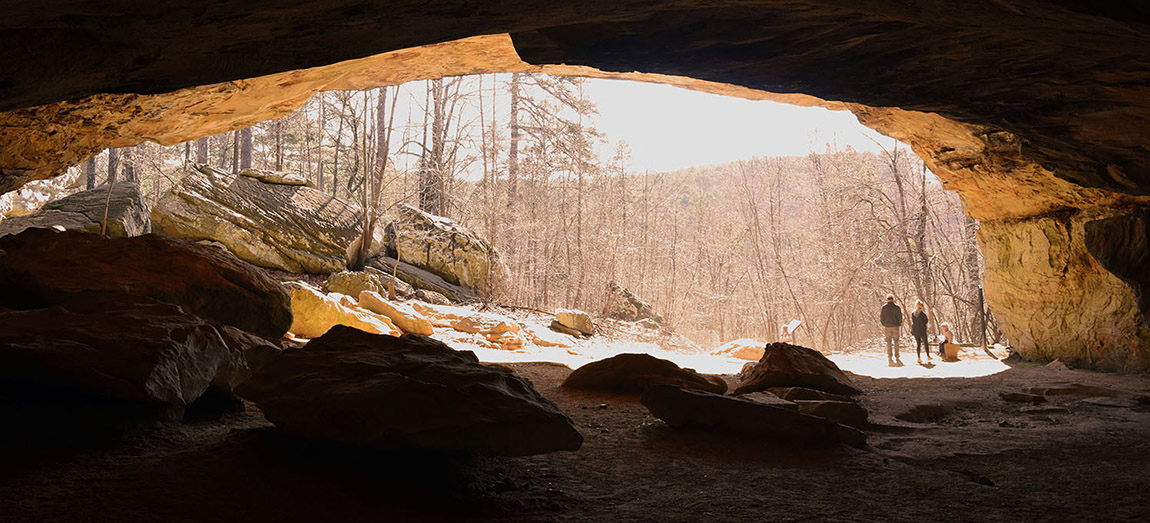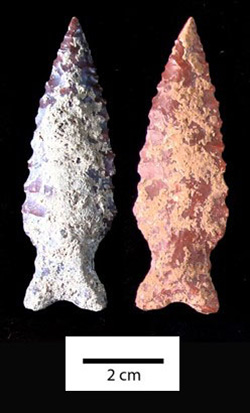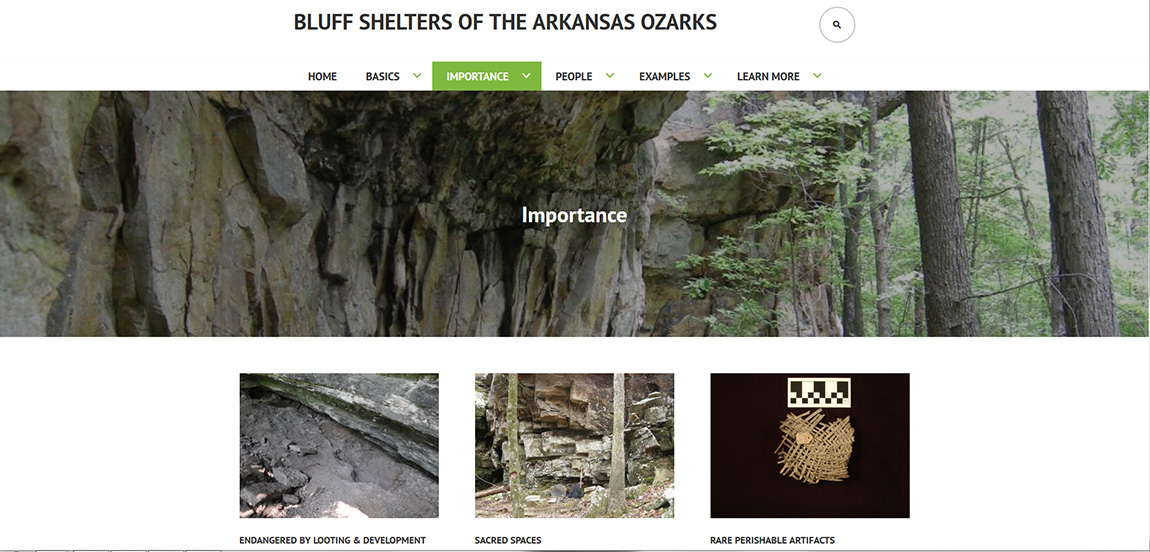
Lydia Rees (Research Assistant, Coordinating Office) and Jamie Brandon (Research Station Archeologist, UAF Research Station)
The Ozark Mountains of Arkansas are famous among archeologists for bluff shelter sites. These are naturally occurring rock overhangs common in the area because of the geology of the region. Bluff shelters were extensively used by prehistoric peoples and are especially interesting to archeologists because the dry conditions in many shelters promote the preservation of usually perishable artifacts. They are one of the few places in the southeastern U.S. where things like baskets, clothing, and other plant-based artifacts survive in the archeological record. Of particular interest are the examples of preserved food plants which give us an important and rare glimpse into the origins of plant domestication in North America.

Samuel Dellinger, the curator of the University of Arkansas Museum from 1926 to 1957, was among the first to focus on the archeology of bluff shelter sites in Arkansas. After its founding in 1967, the Arkansas Archeological Survey has continued this legacy and plays an important role in helping to preserve and investigate these important sites. Since 1999, the Survey has partnered with the University of Arkansas Museum Collections to house and curate these world-class collections. Researchers within the Survey as well as scholars from around the world have studied and published research about the bluff shelter collections.
The Survey has conducted bluff shelter excavations as part of its Sponsored Research Program as well as in collaboration with the Arkansas Archeological Society, and the University of Arkansas Anthropology Department. For example, in the 1990s the Survey revisited two of Dellinger’s sites for limited excavations and reanalyzed the associated collections housed in the Museum. Craddock Shelter and Brown Bluff were both affected by development and the Survey was contracted to mitigate the impact to the archeology of these sites. Each resulted in a technical report published by the Survey’s Sponsored Research Program. The combination of reanalysis and new excavations strengthened our understanding of how bluff shelters were used in the prehistoric past.
Three Arkansas Archeological Society summer Training Programs have focused on bluff shelters. Society Digs like these provide opportunities for the public to be part of uncovering Arkansas’s prehistory. In 1971 the Training Program was at Indian Rock House Cave in Marion County. In 1977 Training Program participants excavated two shelters in Washington County, and in 1994 four shelters in the Spradley Hollow area of Newton County were excavated with the help of Society volunteers.
The Survey collaborated with Dr. Marvin Kay of the University of Arkansas Anthropology Department in 2012 to revisit the Breckenridge Shelter in Carroll County and reopen the excavations conducted by Ray Wood in the 1960s. The new efforts yielded a radiocarbon date associated with a Breckenridge Dalton projectile point found at the base of the excavations. This point, dating to ca. 9765–9555 years old, is the oldest scientifically dated artifact in the state.


